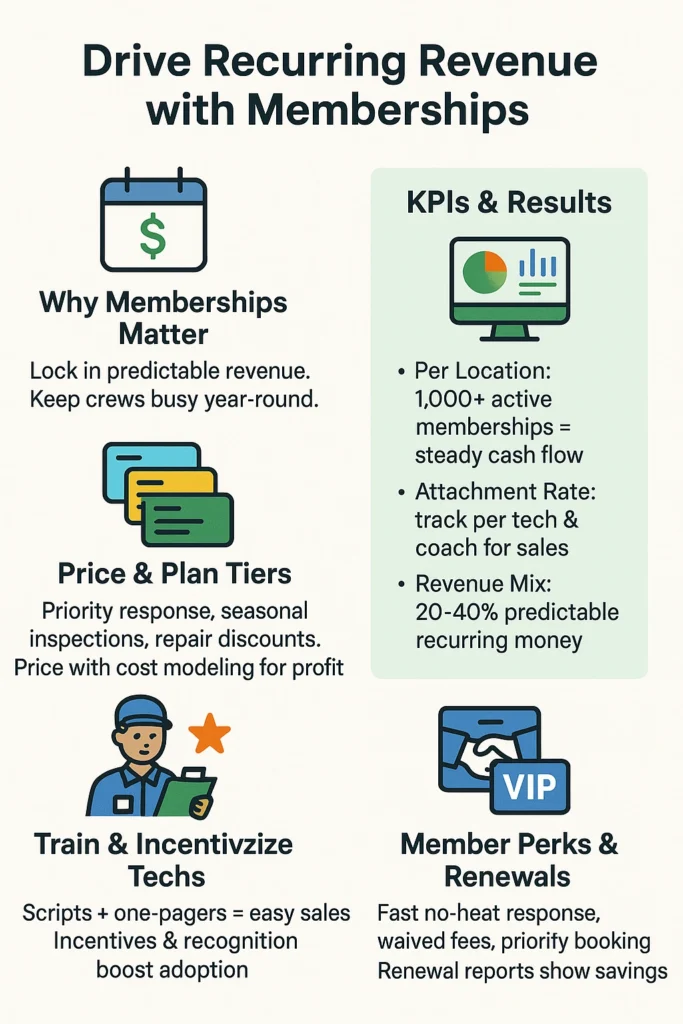Running a successful service business isn’t just about having a great skill or offering, it’s about creating a system that consistently delivers value to your clients while growing sustainably. From the very start, it requires clarity on your target market, understanding exactly what problems you solve, and designing processes that make your service reliable and scalable. Every decision, from pricing to client communication, plays a role in building trust and establishing your reputation.
For service business owners looking to accelerate their growth and avoid costly missteps, expert guidance can make all the difference. That’s where Natalie Luneva comes in. Hire a coach to get personalized strategies, accountability, and actionable steps to take your business to the next level.
Key Takeaways
- Clear planning and budgeting set the foundation for long-term success in any service business.
- Standardized systems and SOPs prevent mistakes and make scaling across locations easier.
- The right software tools streamline booking, dispatch, invoicing, and payments for greater efficiency.
- Delivering an outstanding customer experience builds trust, loyalty, and repeat business.
- Tracking core KPIs and metrics, and getting expert guidance from Natalie Luneva, ensures data-driven growth and profitability.
Start with a Solid Plan for Your Home Service Company
Map neighborhoods and ZIP codes where roofing, plumbing, HVAC, or construction calls concentrate. Note seasonality, roof repair surges after storms and HVAC demand peaks in summer. This local market view helps you pick target customers and the exact services you’ll offer.
Create a practical plan and budget. Build projections that list startup costs: vehicles, tools, software, licenses, insurance, office, labor, and marketing. Assign a number to each item so cash needs and runway are clear.
- Set pricing with a labor rate calculator so wages, overhead, and margin align with final cost.
- Choose structure (sole prop or LLC), document licenses and permits, and secure insurance before your first job.
- Define customer personas, required website pages by service + city, and a marketing budget of 10–20% of projected revenue.
Map competitors in local search and local maps, then spell out the strategies that make your company stand out. Create an org chart with CSR/dispatch, field techs, and ops roles. Finally, set quarterly reviews to update forecasts and adjust plans based on real-world information.
Organize Systems that Scale Across Locations and Trades
Create consistent systems so each trade follows the same playbook. This prevents the three common causes of mistakes Al Levi names: no system, the wrong system, or not following the system.
Create Standard Operating Procedures and an Org Chart
Write SOPs for every repeatable step, from booking a call to closing a job, so plumbing, HVAC, roofing, and construction crews use the same solution path. Use software templates for estimates, forms, and photos so records are uniform and searchable.
Unify Processes so Every Division Runs the Same Playbook
- Standardize materials lists, checklists, and QA steps to speed work and protect margin.
- Build an org chart that clarifies authority, handoffs, and escalation points for owners and people in the field.
- Schedule cross-trade ride-alongs and audits to confirm SOPs are followed and close gaps fast.
- Create division scorecards with shared KPIs so teams align instead of competing.
Streamline Day-to-day Operations with the Right Software
When your booking system, dispatch board, and mobile estimates share data, teams finish more work with less friction. This integration matters for construction, roofing, plumbing, and HVAC crews and the office staff who support them.
Reduce phone time and speed booking. Implement call prompts that surface customer history so CSRs book more first-call appointments.
- Smart dispatching: match the right tech, truck, and inventory for each job to cut windshield time and lift results per day.
- Mobile tools: let techs build estimates, capture photos, enforce checklists, and take secure payments on-site.
- Back-office automation: invoicing, payroll, inventory, and purchase orders run without paperwork, removing bottlenecks as your company scales.
- Cost control: route optimization, centralized pricebooks, and mandatory QA forms protect margin and reduce rework.

Deliver an Outstanding Customer Experience on Every Job
Deliver consistent care that makes every customer feel respected and informed at each visit. A great experience raises spend and loyalty, 75% of U.S. consumers spend more after one, according to Zendesk. Small steps often drive big results for your plumbing, roofing, HVAC, or construction calls.
Set Expectations with Clear Communications
Send confirmations and ETA texts that include technician bios and vehicle tracking. These updates cut phone calls and calm anxious customers. Move from week-out notices to on-the-way alerts when possible; Intown Plumbing saw better coordination this way.
Train Teams in Hospitality and Trust-building
Require booties, floor protection, and a tidy workspace. Offer multiple, no-pressure options and explain pros and cons so people can choose with confidence. Follow up with a next-day “Happy Call” to confirm the fix and invite feedback.
- Photos: standardize before/after documentation for quick answers.
- Escalation path: give techs a clear on-site authority for surprises.
- Empathy scripts: use them for leaks, no-heat, and urgent needs.
| Moment | Action | Result |
| Booking | Confirm with tech bio | Fewer calls |
| On-site | Protect home, tidy up | Better reviews |
| Post-job | Happy Call + review link | Higher loyalty |
Close each job and summarize work, confirm satisfaction, and share an easy one-tap review link. Track themes from customers and reviews so you can tweak the day-to-day ways your company serves people.
How to Run a Successful Service Business with Targeted Marketing
Pinpoint the exact streets and homeowners who need same-day HVAC help, leak repair, or roof patching. Make that clear advantage, speed, quality, availability, or trust, the headline on your website and ads.
Define your ideal customer by neighborhood, home age, and trade triggers. Tailor offers for older homes (pipe failures), storm-prone areas (roof work), or seasonal HVAC checks.
Test Channels, Track Results, and Shift Budget toward ROI
Run short PPC and Local Services Ads tests while you build organic visibility. Use call tracking, UTM tags, and unique landing pages so every lead source reports back.
- Show the one advantage: same‑day, emergency, or warranty-backed work.
- Mix methods: fast channels (ads, lead platforms) and compounding ones (SEO, content, directories).
- Segment emails: unsold estimates, seasonal reminders, new homeowner offers.
- Ask for reviews: every happy customer gets an SMS or email link.
- Document results: log spend, outcome, and lessons so you scale winners quickly.
| Channel | Speed | Typical Investment |
| PPC / Local Ads | Fast | Medium–High |
| Directories / Listings | Fast–Medium | Low |
| SEO / Content | Slow (months) | Low–Medium |
Learn from mentors and give slower channels time to mature. Controlled experiments, change one variable at a time, reveal the best marketing strategies for your trades and neighborhoods.
Boost Local Visibility: Website SEO, Google Business Profile, and Local Services Ads
Local search signals decide whether nearby homeowners find your trade when they need help fast. Focus on city + service pages and a verified online profile so your company appears where customers search.
Create a dedicated page for each city + service (for example, “Dallas HVAC repair” or “Seattle roof replacement”). Add neighborhood names, photos, permit references, and an embedded map to show local proof.
- SEO basics: include city terms in titles, H1s, meta descriptions, and internal links so search engines map your market relevance.
- Google Business Profile: fully verify, update hours, services, photos, and Q&A. Post regular updates and encourage customers to add photos and keywords in their review text.
- Paid capture: use Local Services Ads to appear above PPC and organic; you pay per lead. Pair PPC with service-specific landing pages and call tracking to measure cost and results.
| Channel | Placement | Measure |
| Local Services Ads | Top of results | Leads paid per qualified contact |
| PPC | Above organic | Clicks, conversions, Quality Score |
| Service pages | Organic/local pack | Bookings, phone calls, form submits |
Publish structured data, list starting prices where appropriate, and review results monthly. Shift budget toward channels and keywords that generate booked jobs and repeat customers.
Nurture Demand with Email, Social Media, and Direct Mail
Keep demand steady and match messages to customer moments, unsold estimates, season changes, and move-ins. Use lifecycle marketing for roofing, plumbing, HVAC, and construction so your company stays top of mind between calls.
Build segmented email automations for unsold estimates, “We miss you” nudges, and new homeowner offers. Targeted email earns high ROI (about $40 per $1). Use templates and tools to speed creation, then track revenue in dashboards and repeat what works.
Social Content that Builds Trust and Drives Reviews
Share before/after photos, tech spotlights, and safety checks. Invite customers to post reviews and link those stories back to your website. Set a simple posting cadence and schedule posts to save time.
Postcards that Match Seasonality and Neighborhoods
Mail postcards with pre-winter tune-up offers or storm-inspection deals. Include QR codes or tracking numbers so each campaign ties to clear results.
- Repurpose FAQs and guides from your website into email and social formats.
- A/B test subject lines, creative, and offers to improve response.
- Keep list hygiene routines to keep deliverability high.
| Channel | Typical Offer | Tracking |
| Unsold estimate follow-up | UTM + dashboard | |
| Social | Before/after posts | Engagement + review links |
| Postcards | Seasonal tune-up | QR code or promo number |
Encourage and Manage Online Reviews to Win More Customers
Fresh impressions matter: ask for a short review while the visit is still clear in the homeowner’s mind. Automations that send an SMS or email with one-tap links to Google and Facebook capture feedback fast and lift conversion. Seventy-six percent of customers check online reviews before choosing a local company, and quick responses drive trust.
Train techs to confirm the customer is happy, then offer the quick link. Provide simple instruction cards for less tech‑savvy homeowners and centralize monitoring so you can reply within hours, not days.
- Send review requests at job completion via SMS/email with one-tap links.
- Use templated negative replies: thank the reviewer, apologize, state intent to make it right, and give a direct contact.
- Track ratings by tech and service line to spot coaching needs and celebrate top performers.
| Action | Benefit | Timing |
| Immediate SMS/email | Higher response rate | Within 1 hour |
| Centralized monitoring | Faster replies | Same day |
| Instruction cards | More posts from older homeowners | At job close |
Drive Recurring Revenue with Service Agreements and Memberships
Membership plans lock in predictable revenue and keep your crews busy through slow months. For construction, roofing, plumbing, and HVAC, memberships turn one-off calls into steady income and stronger customer relationships.
Price for Value, Define Scope, and Tailor Plans
Define tiers with clear perks: priority response, seasonal inspections, and repair discounts. Price each tier using labor and material cost modeling so every plan adds money to your margin while staying competitive.
Tailor agreements by property history and trade. Use your software to set the right number of annual visits and checklists per job.
Train and Reward Techs for Selling Memberships
Equip techs with simple scripts and one‑pagers they can show at the end of a satisfied visit. Offer clear incentives and public recognition so CSRs and techs push adoption.
- Schedule visits months ahead to smooth seasonal peaks.
- Include member-only perks: faster no‑heat response, waived diagnostic fees, and priority booking.
- Use renewal reports that show customers usage and savings to make renewals an easy decision.
| Target | Per location | Benefit |
| Active memberships | 1,000+ | Stabilize staffing and cash flow |
| Attachment rate | Track per tech | Coach for consistent sales |
| Revenue mix | 20–40% | Predictable recurring money |
Track attachment rates by tech and service line. Reward wins, coach gaps, and keep your owner and ops team focused on membership growth as a core way to steady your company’s income.

Track the Right KPIs so You Can Make Data-driven Decisions
Track the few metrics that reveal which trades and territories add real revenue and which drain resources. Clear numbers let you spot staffing gaps, coaching needs, and marketing winners before they hurt margin.
Revenue, Margin, Closing Rate, Efficiency, and ROI
Define a core dashboard with revenue, gross margin, average ticket, conversion and close rates, and job profitability by trade and location. Include billable vs. available hours so utilization shows up early.
- Attribute marketing to revenue so you shift spend toward channels that deliver results.
- Use software that links calls, estimates, invoices, and collections to financial outcomes.
- Track callbacks and rework per tech and service type to protect margin and guide training.
- Compare divisions, construction, roofing, plumbing, HVAC, to find the best solution lines for growth.
- Send weekly role-based scorecards so apprentices, techs, managers, and owners see the same numbers.
| Role | Primary KPI | Target |
| Apprentice | Callbacks per 100 jobs | <5 |
| Tech | Billable hours / available hours | 75–85% |
| Manager | Division gross margin | 30%+ |
| Owner | Marketing ROI & company profit | 3x spend / positive net |
Automate weekly scorecards so everyone gets the same information. Set quarterly targets and review leading indicators monthly. Keep one source of truth so meetings focus on decisions, not debating numbers.
Lead your Team: Hire, Coach, and Delegate for Growth
Shift from fixing every problem yourself to shaping leaders who keep work moving. That choice lets your company scale without you becoming the daily bottleneck.
Work on the Company: From Control to Scalable Leadership
Hire for attitude and training for skill. People who want to learn adapt faster than hires with perfect resumes.
Set clear expectations, perform regular ride-alongs, and give feedback often. Use documented SOPs and guardrails so leaders can own outcomes.
Protect focused time each week for strategy, systems, and hiring. When you work on the plan, not only in the plan, growth follows.
Build Partnerships and Local Networks for Referrals
Forge relationships with realtors, property managers, builders, and complementary trades. These partners send steady referrals and help you reach more homes in your market.
- Join local associations and trade groups to learn practical methods and raise your profile.
- Create apprenticeships and career paths to build a reliable talent pipeline.
- Establish a weekly cadence: leadership meeting, crew huddles, and frontline check-ins.
Celebrate wins publicly and recognize people who improve processes. Choose growth over control and coach others to be No. 1. That is the most reliable way forward for owners who want lasting results.
Hire a Service Business Coach that Will Help You Run Your Service Business Successfully
Working with a coach like Natalie Luneva gives you more than just advice, it gives you a clear roadmap, real systems, and measurable results. When you hire her, you benefit from:
- Tailored strategies for your service niche (trades, plumbing, HVAC etc.) so you’re not using generic templates.
- Improved financial clarity, including better job-costing, cash flow forecasting, and operations that help you boost profitability.
- Streamlined systems & leadership which free you from daily chaos, scheduling, teams, communication, tech integration, so you can focus on growth.
- Accountability + clarity: regular check-ins, goal setting, and progress tracking so you don’t stall or settle for “good enough.”
If you’re ready to stop putting out fires and instead build a service business that runs smoothly AND grows profitably, let’s chat. Book your free discovery call today and uncover the biggest opportunities waiting in your business.

Conclusion
Running a successful service business comes down to more than just doing great work, it’s about building systems, leading people, and creating consistent customer experiences that drive trust and loyalty. When you combine smart planning, clear pricing, streamlined operations, and targeted marketing, your business stops being reactive and starts running with purpose. The owners who succeed are the ones who track their numbers, coach their teams, and make small improvements every week.
If you’re ready to stop putting out fires and instead build a service business that grows profitably and sustainably, working with a coach like Natalie Luneva can give you the clarity, accountability, and proven strategies you need. Book your free discovery call today and take the first step toward running your service business with confidence.
FAQs
What is the biggest mistake most service business owners make in the beginning?
The most common mistake is focusing only on technical skills while neglecting systems and customer experience. A great plumber or roofer may be excellent at their trade, but without processes for scheduling, billing, marketing, and follow-up, the business struggles to scale. Success comes when you treat your service as a business first, not just a skill.
How can I scale my service business without losing quality?
Scaling requires replicable systems. Document SOPs, use software that integrates booking, dispatch, and payments, and train managers who can coach field staff. Regular audits and customer feedback loops ensure quality stays consistent as you add more technicians or expand into new locations.
When should I hire a service business coach?
A coach is most valuable when you feel stuck, whether in growth, profitability, or leadership. Coaches provide outside perspective, proven strategies, and accountability. Hiring a coach early can help you avoid costly mistakes, while hiring later can help you break through plateaus and scale sustainably.
How do I know if my service pricing is right?
Your pricing should cover labor, overhead, and a healthy profit margin, typically 15–30% in service industries. If you’re always busy but barely making money, you may be under priced. If you’re losing jobs to competitors, test your value messaging. A labor rate calculator helps ensure you’re not guessing.
What KPIs should I track daily in my service business?
Track core metrics like booked jobs per day, revenue per technician, conversion rates, and average ticket value. On the financial side, monitor cash flow, gross margin, and overhead percentage. Keeping a scorecard visible to your team ensures everyone stays aligned on what success looks like.


